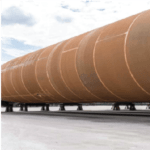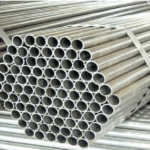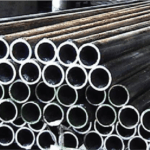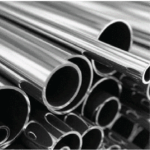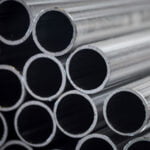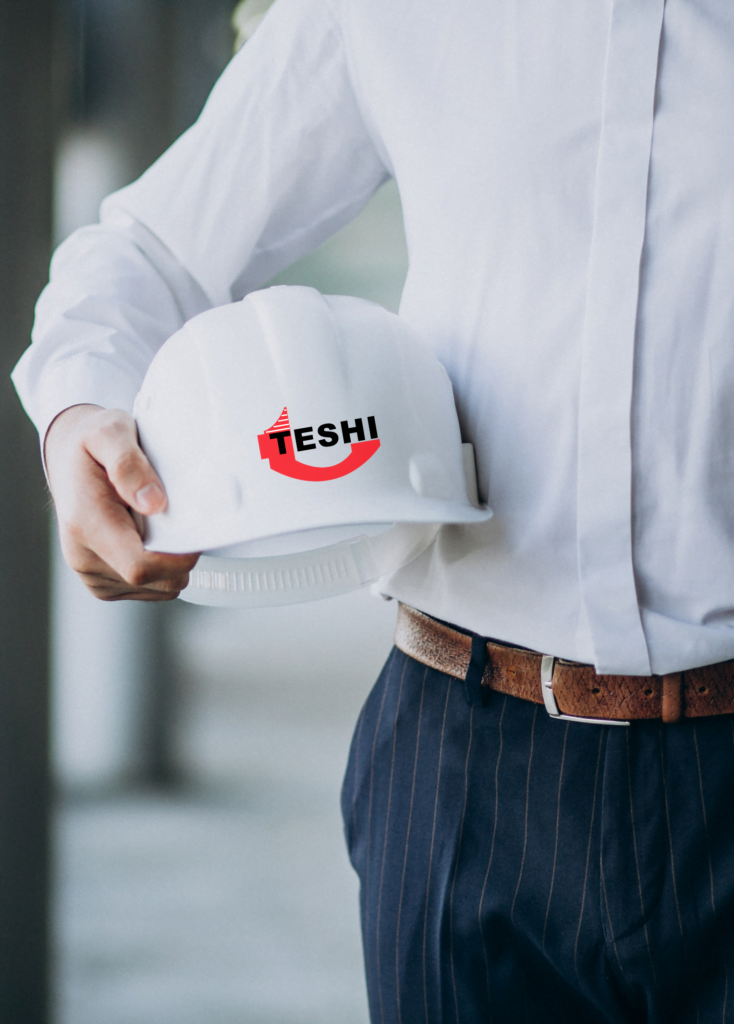Best Pipes Dealer & Supplier in India
We are leading Pipes Dealer & Supplier and we offer our pipes in a wide variety.

Table of Contents
Teshi Group : Leading Manufacturer, Stockist, Supplier, and Exporter of Best Pipes in India.
Teshi Group is a leading manufacturer, stockist, supplier, and exporter of high-quality pipes in India, offering a comprehensive range of products to meet the diverse needs of industries such as oil & gas, petrochemical, power generation, water treatment, and construction. Renowned for their strength, reliability, and performance, Teshi Group’s pipes are manufactured using premium-grade materials like stainless steel, carbon steel, alloy steel, and other alloys, ensuring exceptional durability and resistance to corrosion, high pressure, and extreme temperatures. The pipes are engineered to meet international standards and specifications, making them suitable for a wide range of applications, from fluid and gas transportation to structural and industrial uses. Teshi Group provides a variety of pipe types, including seamless pipes, welded pipes, and pipe fittings, all tailored to meet the specific needs of each project. With advanced manufacturing processes and stringent quality control, Teshi Group ensures that every pipe delivers consistent performance, safety, and longevity. Serving both domestic and international markets, Teshi Group’s extensive inventory and efficient distribution network ensure timely delivery and customer satisfaction, making it the trusted choice for high-quality pipes across industries.
About :-
Pipes are essential components used for transporting fluids, gases, and solids across various industries and applications, ranging from water supply and wastewater management to oil and gas pipelines, and even HVAC systems. Typically made from materials such as steel, copper, PVC, stainless steel, and concrete, pipes are chosen based on the type of substance being conveyed, the required pressure and temperature resistance, and the environment in which they are used. These materials ensure durability, corrosion resistance, and strength, allowing pipes to function efficiently over long periods. Pipes come in different sizes, wall thicknesses, and pressure ratings to accommodate diverse system requirements, from small-scale plumbing systems to large-scale industrial installations. They can be installed in above-ground, underground, or underwater configurations, and may include specialized coatings or linings to further enhance their performance and lifespan. The manufacturing process of pipes often involves rigorous quality control to meet industry standards, ensuring safe and reliable operation. With their ability to seamlessly connect various system components, pipes serve as the backbone of infrastructure, enabling the safe and efficient transport of water, chemicals, fuels, and other vital materials across a wide range of sectors, including construction, energy, pharmaceuticals, and agriculture.
Teshi Group is an ISO certified manufacturer & distributor in India.
Pipes Packaging & Delivery Details
Pay Mode Terms- L/C (Letter of Credit), T/T (Bank Transfer), Other
Port of Dispatch- Any Port from India
Packaging Details- Pipes are packaged with caution and safety so they reach our client’s as good as he would expect. Packaging Charges Extra.
Tax- 18% GST only for domestic delivery. No GST for other countries.
Frequently Asked Questions
Most frequent questions and answers
What are pipes used for?
Pipes are used in a variety of applications, primarily for the transportation of liquids, gases, and sometimes solids, across different industries. In residential and commercial buildings, pipes are crucial for water supply, drainage, and heating systems. In industrial settings, pipes carry substances such as oil, gas, chemicals, and steam. They also play a key role in the infrastructure of utilities, such as sewage systems and natural gas pipelines, supporting both the distribution and transport of essential materials.
What materials are commonly used in pipe manufacturing?
Pipes are made from a wide range of materials, each suited to specific applications. Common materials include carbon steel, stainless steel, copper, PVC (Polyvinyl Chloride), HDPE (High-Density Polyethylene), and cast iron. Carbon steel and stainless steel pipes are often used in industries that require durability and resistance to high pressure and temperature, such as oil and gas or power generation. Copper pipes are popular in plumbing systems, while PVC and HDPE are frequently used for water distribution and drainage because of their corrosion resistance and cost-effectiveness.
What are the different types of pipes available?
There are various types of pipes, classified based on material, shape, and usage. For example, steel pipes are commonly used in construction and industrial applications due to their strength and ability to withstand high pressure. PVC pipes are lightweight and corrosion-resistant, making them ideal for plumbing and irrigation systems. HDPE pipes are used for their flexibility and resistance to chemicals, making them suitable for drainage and sewage systems. Additionally, there are specific pipe types such as spiral welded pipes, seamless pipes, and threaded pipes, each designed for particular operational conditions.
How are pipes fabricated?
Pipes are fabricated through different methods, depending on the material and desired final product. For steel pipes, common fabrication processes include extrusion, seamless rolling, and welding. In the case of plastic pipes like PVC or HDPE, the fabrication process typically involves extrusion, where raw material is heated and forced through a mold to create the pipe. The size, thickness, and design of the pipe are adjusted during the fabrication process to meet specific standards for pressure, temperature, and environmental conditions.
What are the key factors to consider when selecting pipes for a project?
When selecting pipes for any project, it is important to consider factors like the type of material that will best withstand the environment (e.g., exposure to chemicals, high temperatures, or pressures). The diameter and wall thickness of the pipe are critical to ensure it can handle the intended flow rate and pressure requirements. Additionally, the lifespan and maintenance needs of the pipe, its cost, and its ease of installation are also key considerations. For instance, in corrosive environments, selecting corrosion-resistant materials such as stainless steel or plastic pipes is crucial for long-term performance.
What are the common applications of pipes in industries?
Pipes are widely used in various industries. In the oil and gas sector, pipes are used for the transport of crude oil, natural gas, and refined products. In the power generation industry, pipes are used to carry steam and hot water, as well as for cooling systems. In chemical plants, pipes transport raw chemicals, solvents, and waste products. The water supply industry relies on pipes for the distribution of potable water, while sewage treatment and drainage systems depend on pipes to manage wastewater. Additionally, in construction, pipes are an essential component for HVAC systems, plumbing, and fire suppression systems.
How do pipes affect water flow and pressure?
The design and size of a pipe play a significant role in determining water flow and pressure. Larger diameter pipes can accommodate higher flow rates, while smaller pipes restrict flow but may maintain higher pressure. The material of the pipe also affects flow efficiency, as rougher interior surfaces can cause more friction, reducing flow efficiency and increasing the required pressure to move fluids. Proper pipe sizing is essential to avoid issues such as low water pressure, flow blockages, or excessive wear on pumps and equipment.
What are the challenges in pipe installation?
Pipe installation can be a complex process, requiring careful planning and execution. Challenges include ensuring proper alignment and leveling of the pipes to prevent blockages, leaks, or structural failure. In some cases, installation must account for challenging terrains or environments, such as underground installations or systems exposed to extreme temperatures. Pipes must also be properly sealed at joints to avoid leaks and ensure pressure integrity. Additionally, safety protocols must be followed, especially in industries where pipes carry hazardous materials.
How do pipes withstand high-pressure conditions?
Pipes that are used in high-pressure applications, such as oil pipelines or steam lines, are typically fabricated from strong materials like carbon steel or stainless steel. The design of these pipes includes thicker walls to ensure they can withstand the internal pressure exerted by the fluid or gas within. In high-pressure systems, it’s also important that the joints and fittings are tightly sealed to prevent leaks. Pipes may be tested for pressure tolerance through pressure testing to verify their integrity before being put into service.
Can pipes be customized for specific needs?
Yes, pipes can be customized based on the specific needs of a project. Customization can involve altering the pipe’s length, diameter, wall thickness, or material to meet specific application requirements. Pipes can also be fabricated with custom fittings, such as elbows, tees, or flanges, to connect with other parts of a system. Specialized coatings can also be applied to protect against corrosion, abrasion, or chemical exposure. Custom pipes are often designed for specific environments, such as extreme temperatures, high pressure, or corrosive substances.
What is the maintenance schedule for pipes?
Maintenance of pipes typically involves regular inspections to check for signs of wear, corrosion, or leaks. Depending on the environment, pipes may need to be cleaned to remove debris, sediment, or scale that can restrict flow. For example, pipes used in water systems may require periodic cleaning to ensure they remain free from mineral buildup. The maintenance schedule also depends on the material of the pipe—metal pipes may require anti-corrosion treatment, while plastic pipes need less maintenance but should be checked for cracks or other signs of wear.
How do pipes prevent corrosion?
Pipes can be designed to prevent corrosion in a variety of ways. For example, steel pipes are often coated with a layer of zinc (galvanization) to protect them from rusting. Stainless steel is inherently resistant to corrosion due to the chromium content, which forms a protective oxide layer. In some cases, corrosion-resistant materials such as PVC, CPVC, or HDPE are used to prevent degradation, especially in environments where pipes are exposed to moisture or chemicals. Additionally, pipes may be fitted with sacrificial anodes or treated with corrosion inhibitors to prolong their lifespan.
What are the standards for pipes?
Pipes are designed and manufactured according to various industry standards, which ensure their safety, performance, and compatibility with other components. Common standards include ASTM (American Society for Testing and Materials), ISO (International Organization for Standardization), ASME (American Society of Mechanical Engineers), and API (American Petroleum Institute) for specific industries such as oil and gas. These standards cover aspects such as material quality, pipe dimensions, pressure ratings, and safety measures. Following these standards is crucial to ensure the integrity and performance of the pipe systems.
What are the environmental considerations for using pipes?
Environmental considerations when using pipes include ensuring that the materials are suitable for the environment they will be used in, such as resistance to corrosion, chemicals, or extreme temperatures. Pipes used for transporting water or waste must be designed to prevent contamination. Recycling of old pipes and using sustainable materials is also a key consideration in reducing the environmental impact of piping systems. Additionally, the design and installation of piping systems should minimize energy consumption and waste during operation.
How are pipes tested for quality?
Pipes undergo various tests to ensure they meet the required quality standards. These tests include pressure tests, where pipes are filled with water or air and subjected to pressure to check for leaks or weaknesses. There are also visual inspections to check for surface defects such as cracks or dents, as well as non-destructive tests (NDT) like ultrasonic testing to assess the pipe’s integrity. For metal pipes, tests such as tensile strength and hardness tests are performed to ensure that they can withstand mechanical stress. For plastic pipes, the testing focuses on flexibility, impact resistance, and UV stability.
How do I choose the right pipe size?
Choosing the right pipe size is crucial for ensuring efficient flow and preventing issues like clogging or over-pressurization. The required pipe size is typically determined by the flow rate and pressure requirements of the system. If the pipe is too small, it may not allow for adequate flow, leading to high pressure and potential damage. Conversely, pipes that are too large can be costly and may lead to excessive water or gas wastage. Standard industry guidelines and calculations based on the application (such as fluid velocity and system demand) are typically used to determine the optimal pipe size.
What are the advantages of using stainless steel pipes?
Stainless steel pipes are highly valued for their strength, resistance to corrosion, and ability to withstand extreme temperatures. They are ideal for applications in industries like food and beverage, pharmaceuticals, and chemical processing, where hygiene and durability are critical. Stainless steel pipes are also resistant to rust, pitting, and scaling, making them ideal for systems exposed to harsh environments or corrosive substances. Additionally, stainless steel offers a longer lifespan compared to many other materials, reducing the need for frequent replacements and maintenance.
What is the difference between seamless and welded pipes?
Seamless pipes are manufactured without any joints or welds, meaning they are formed from a solid piece of metal or plastic that is stretched and shaped into a pipe. This type of pipe is preferred for applications that require high pressure, as the lack of seams makes them less likely to fail under stress. On the other hand, welded pipes are made by joining two pieces of metal together along a seam. While welded pipes are generally more cost-effective, they may not be suitable for high-pressure applications, as the weld can become a point of weakness. However, welded pipes can be used for a wide range of applications and are typically easier and faster to produce.
What are the different types of fittings for pipes?
There are various types of fittings designed to connect, redirect, or regulate the flow in a pipe system. Common pipe fittings include elbows (to change the direction of flow), tees (to branch the pipe into multiple directions), couplings (to join two pipes together), reducers (to change the pipe size), and flanges (used for connecting pipes to other components or systems). The type of fitting selected depends on the system’s design and the material of the pipes, with specific fittings available for different materials such as metal, PVC, and stainless steel.
How can I prevent pipe blockages?
To prevent blockages in pipe systems, regular maintenance and proper installation are key. One of the main causes of blockages is the accumulation of debris or scale inside the pipe. Regular cleaning, such as flushing or using chemical treatments, can help remove any build-up and prevent clogs. For water systems, installing filters can help trap particles before they enter the pipes. In addition, using the right type of pipe for the application (e.g., smooth-walled pipes for water) can reduce the risk of materials accumulating inside. Installing the right diameter of pipes, in accordance with flow requirements, can also help to prevent blockages by ensuring the system operates efficiently.

